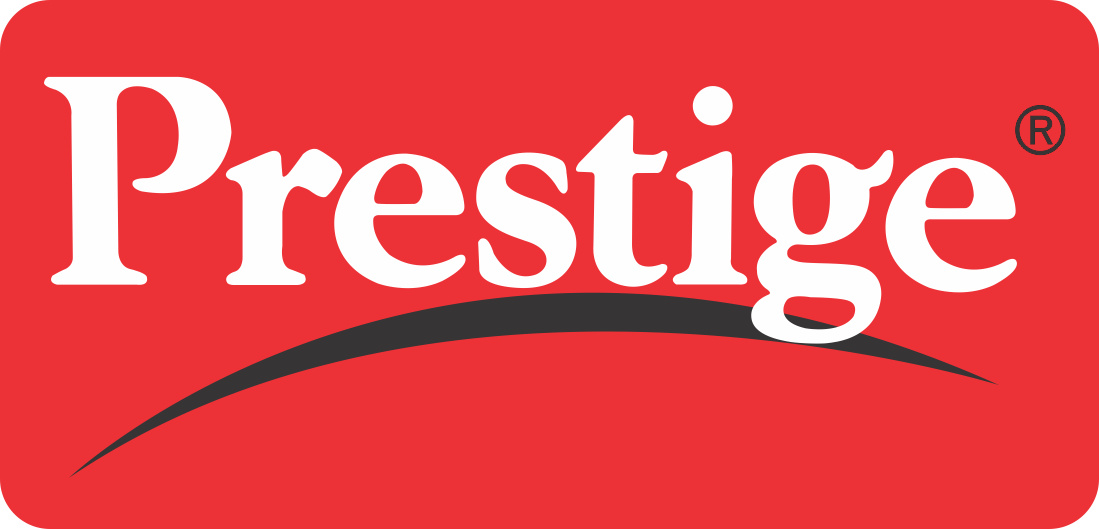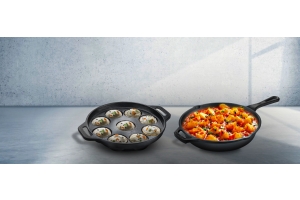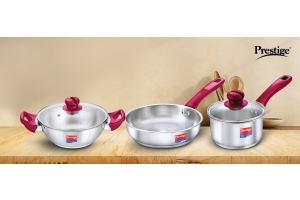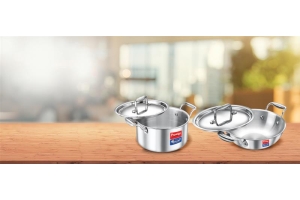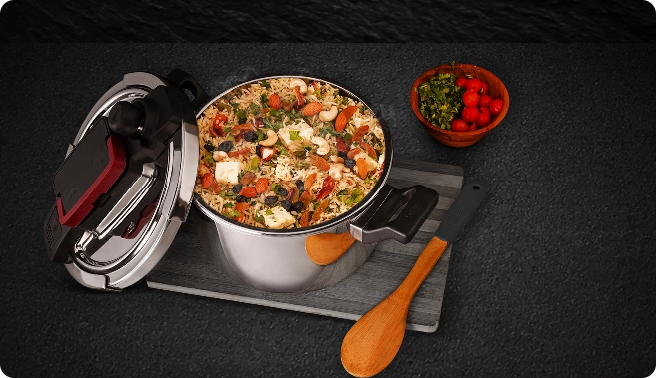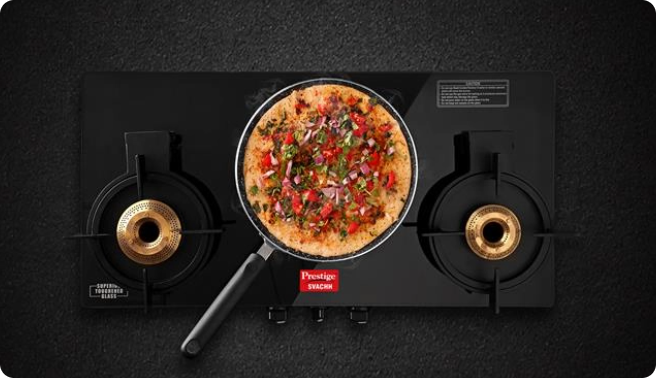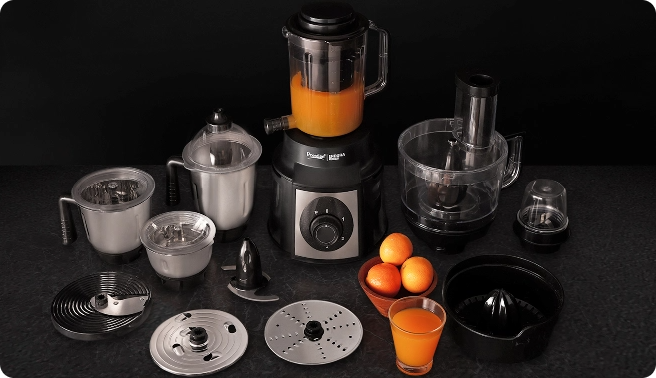There are numerous options available in the market when it comes to cookware material, and to choose among them might be overwhelming. But the one thing that has never changed over generations, and continues to be a choice of professional and passionate chefs is cast iron. But what is it that makes cast iron cookware so special and why should you consider buying it?
In this blog we will go through the details of what cast iron is, how it is made, along with the types and cast iron cookware benefits.
What is Cast Iron Cookware? What is cast iron cookware made of?
The most common misunderstanding about cast iron cookware is that it is completely made of iron, which makes it easily prone to rust and damage. In reality, the name comes from its manufacturing process.
The main benefit of Prestige cast iron cookware is that it is not coated with complex and harmful chemicals like PTFE (Teflon)/ PFOA. Moreover, the cookware comes pre-seasoned, making the usage process further convenient This makes it safer to use and even adds a uniquely traditional flavor to all your dishes.
Types of Cast Iron Cookware
Modern cast iron cookware sets come in different types, each suited for distinct cooking needs and purposes. Here are a few:
1. Cast Iron Skillet
One of the best cast iron cookware is a skillet or a frying pan, which can be used for multiple purposes like stir-frying, sauteing, baking and more. It's versatile and convenient with a strong base and raised edges that flare outwards. These come in different sizes, sometimes equipped notch on the edge to make it easier to pour liquids without spilling.
2. Cast Iron Kadai
The desi variation of a wok is a cast-iron kadhai which generally comes with a flat round base, flaring edges, and a deeper body. They come with handles on both sides, ideal for cooking soups, curries, gravy, and much more. It can be used for both slow cooking and deep frying; and is an essential addition to your kitchen; used for cooking a vast variety of traditional Indian dishes, from biryanis and chicken kadhai to crispy pakoras and samosas.
3. Cast Iron Tawa
A cast iron tawa is a necessary partner in Indian kitchens for making chapatis, parathas, and dosas. The cast iron tawa can be naturally seasoned, which increases its non-stick qualities over time. It can also retain heat for a longer period making your snacks tasty as well as crispy.
4. Cast Iron Grill Pan
Grill pans are an alternative to outdoor grills, but more convenient and easier to use. Prestige’s cast iron grill pan has structured ridges to give you perfect grill marks and facilitate even cooking. The even heat distribution makes it easier to grill vegetables, meat and sandwiches in the comfort of your indoors.
5. Cast Iron Dutch Ovens
Dutch ovens are deep and heavy pots that come with a cast iron lid. They are ideal for slow cooking and stewing. Their large volume makes them great for making soups and even baking bread.
8 Benefits of Using Cast Iron Cookware
There are several benefits of using cast iron cookware in addition to its rustic and aesthetic appeal. Here are some benefits of cooking in cast iron cookware that make it perfect choice for your kitchen:
1. Durability
Cast iron cookware is highly durable and can last generations if taken care of properly. Other non-stick pans can wear out and lose their coating over time, but cast iron only improves over time with usage. Its thick and hard nature makes it resistant to scratches and dents.
2. Natural Nonstick Surface
If seasoned well, cast iron cookware can develop a non-stick surface without the need for synthetic coatings. This makes it a healthier and safer alternative to modern non-stick cookware.
3. Even Heat Distribution
The most highlightable quality of a cast iron cookware is its ability to distribute and retain heat evenly. This helps in a consistent cooking experience whether it is frying or baking. This also makes it useful in keeping the food warm for a longer time even after switching off the stove.
4. Versatility
Cast iron cookware can be used on a variety of cooking surfaces like stovetop, oven, induction and even on open flame. Since cast iron is strong and can handle higher temperatures than other cookwares, you don't need to worry about damaging it while cooking for longer durations..
5. Health Benefits
Cooking with cast iron cookware has health benefits too. Since the surface directly comes in contact with the food, iron can leach into your food in tiny quantities which helps cover iron deficiencies in your body.
6. Unique flavor
Cast iron cookware only gets better with time as its seasoning develops, adding a unique depth of flavor to all your dishes. It’s one reason why recreating your grandma’s traditional recipes in modern cookware never quite hits the mark, even if you follow her instructions to the letter. This is why the flavors never hit the mark despite following your Grandma's recipe to the T while recreating that same dish in modern cookware.
7. Eco-Friendly and Sustainable
Cast iron cookware is crafted from natural materials, making it a healthier, eco-friendly option that’s also recyclable. With proper care, it can last for generations, making it one of the most sustainable choices for your kitchen.
8. Value for money
The fact that you can use your cast iron utensils for a lifetime, makes it a one-time investment that you can reap benefits from, for a long-long time.
People Also Search For: How To Choose Cast Iron Cookware
Difference Between Cast Iron and Stainless Steel Cookware
Stainless steel and cast-iron cookware serve different purposes and can be used for different cooking needs. Like cast iron, stainless steel is also an alloy. It comes with added carbon, chromium, aluminum, and copper to prevent rust and improve heat conduction.
While stainless steel cookware heats up much quicker than cast iron, it can't retain as much heat. Therefore, it is suitable for quick cooking needs. The non-stick properties and durability of stainless steel are much weaker compared to well-seasoned cast iron. Also, the flavor of meat on cast iron can never be met with stainless steel.
People Also Search For: How To Choose Stainless Steel Cookware
Conclusion
Cast iron cookware is a timeless solution to healthy cooking. You don't have to be confused while comparing it with stainless steel, because both are used for different needs. Some dishes are better cooked with cast iron, while for others, stainless steel works better.
Investing in prestige cast iron cookware is thus a better choice, not only for the quality of your meals but also for durability and more importantly, your health.
FAQ’s (Frequently Asked Questions)
1. Is cast iron cookware too heavy and difficult to maintain?
Not at all! Cast iron might have a natural heft, but it's made only adds to its strength and durability. While ordinary cast iron cookware needs seasoning to make it non-stick, pre-seasoned cast iron cookware is also available in the market, like Prestige’s cast iron cookware range.
2. Can I use cast iron cookware in my modern kitchen?
Absolutely! Cast iron cookware works well with all heat sources like a flame-top, electric/induction-based cooktop, and even ovens. Its versatile nature is especially why so many people choose cast iron over other options.
3. Do I need to learn any special techniques to be able to cook with cast iron?
Cooking with cast iron is no rocket science. All you need to do is preheat your cookware with a little oil, and you are ready to go! It is better to avoid cooking highly acidic foods in a new pan, but once it gets seasoned well, you can use it to make nearly everything.
4. How to take care of my cast iron cookware to prevent rust and last longer?
You can easily prevent rust and damage with proper care. Always make sure to dry your cast iron completely after washing, then apply a layer of oil. Store in a dry place and always avoid harsh detergents and soaking in water for a longer time.
5. Is cast iron better than stainless steel?
While cast iron often seems to be a better option, we need not compare between the two, because both meet different cooking needs. Cast iron has more heat retention and uniform heat distribution than steel, making it perfect for slow cooking, frying, and baking. It also improves its non-stick qualities over time, which you can’t get with stainless steel. On the other hand, it can be a great material for utensils like pressure cookers, which are created essentially for speedy cooking.
